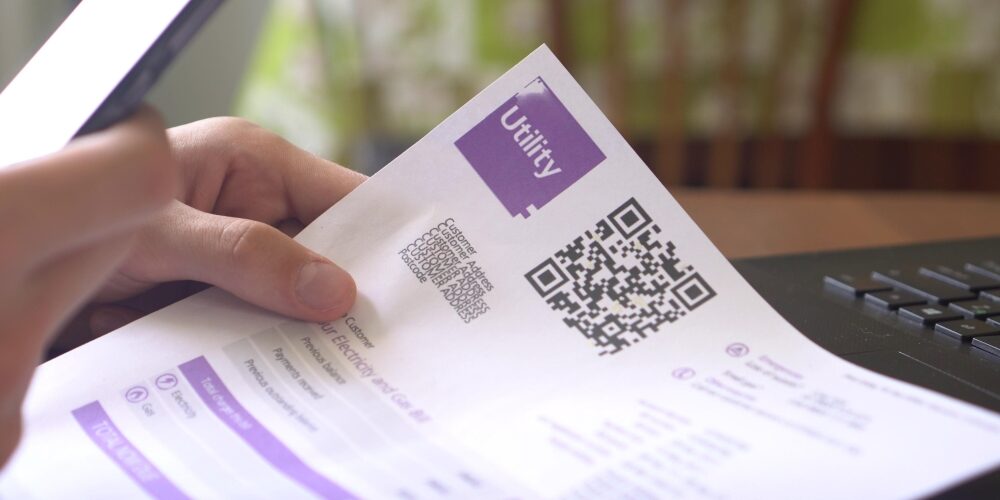Table Of Contents: Tips To Get Help With Utility Bills
- Contact Your Provider For Electric Bill Assistance
- Get Electric Bill Assistance Through LIHEAP
- Let LIHWAP Pay Your Water Bill
- Ask 211 For Emergency Help With Electric Bills
- Help With Utility Bills From Your Community Action Agency
- Can You Pay Utility Bills With TANF Benefits?
- Lower Your Internet Bill With The Affordable Connectivity Program
- How To Save Money On Utilities
Tips To Get Help With Utility Bills
The government has utility assistance programs to help families in need. And, as you are about to see, there are other ways to get emergency help with electric bills and even your monthly Internet payments, so everything in your home stays connected.
Contact Your Provider For Electric Bill Assistance
This tip works if you need help with light bills or are worried about getting service disconnected with your water, gas, or Internet company. While you may be doing everything in your power to avoid your utility company as they hound you for payment, ignoring the issue won’t make it go away. In fact, it will likely make it worse, depending on the disconnection laws in your state. A utility provider can disconnect your service in most cases for failure to pay, provided they give you a warning that they are about to do so.
What can stop a utility company from disconnecting your service? In most cases, only exceptional circumstances will keep your lights, water, gas, etc., on when you stop paying the bill, such as:
- Extreme cold or heat that requires your electricity to be on so you don’t perish
- A household member needs utilities like electricity because they are elderly, disabled, on life support, etc.
Surprisingly, there is another way to keep your utilities connected even if you are late in paying, and that is by setting up a payment plan with your provider. Doing so shows that you are willing to negotiate and want to remain a customer. More importantly, it shows a willingness and intent to pay, which is what your provider wants in the first place.
To initiate a payment plan with a utility company, you can follow these steps:
- Contact the utility company: You can call the customer service number of your utility company or visit their website to initiate the process of setting up a payment plan.
- Explain your situation: Let the representative know that you are having difficulty paying your bills and want to set up a payment plan. Be honest about your financial situation and what you can afford to pay.
- Agree on a payment amount: Based on your financial situation, the representative will work with you to agree on a payment amount you can afford. This amount will be spread out over several months so that you can pay your bill in smaller, more manageable payments.
- Choose a payment schedule: You can choose a payment schedule that works best for you. This could be weekly, bi-weekly, or monthly payments.
- Provide payment information: Once you have agreed on a payment amount and schedule, you will need to provide payment information, such as a credit or debit card.
- Confirm the details: Before the payment plan begins, make sure to confirm all of the details with the representative, including the payment amount, schedule, and due dates.
- Make payments on time: It’s essential to make your payments on time to avoid any late fees or disconnection of service.
Remember that utility companies have different policies and procedures for setting up payment plans, so the exact steps you need to take may vary. When setting up a payment plan, know that you will probably be presented with two standard options. Both can make your monthly payments more manageable, resulting in that long-term help with utility bills that you desire:
- You get to pay the same amount each month, so you don’t get any bills that are incredibly high during particularly hot or cold months or due to other circumstances that can make usage skyrocket. Your utility company will determine this amount by dividing your yearly expenses by 12.
- You get to pay what you owe now over several monthly payments in the future. Your current balance owed is added to future payments, so you have time to fix your finances.
Get Electric Bill Assistance Through LIHEAP
LIHEAP is perhaps the most popular of all utility assistance programs. The Low Income Home Energy Assistance Program is a federal assistance program that provides financial assistance to struggling households to help them pay for energy bills, such as heating and cooling costs. It can also lower your bills via weatherization that makes your home more energy-efficient. LIHEAP is administered by the Department of Health and Human Services (HHS) and is run through local government agencies and non-profit organizations.
To be eligible for LIHEAP electric bill assistance, you must meet specific income guidelines. The exact income limits vary from state to state and can change yearly, but you must generally be at or below 150% of the federal poverty line. In addition to income requirements, some states have additional eligibility criteria, such as being a homeowner or having a disability.
If you are eligible for LIHEAP, the amount of assistance you receive will depend on factors such as your household income, household size, and energy costs. The program provides a one-time payment to help with energy bills and is usually paid directly to the utility company.
To apply for LIHEAP assistance, you can contact your local government agency or non-profit organization that administers the program in your state. You can find a list of these organizations on the LIHEAP Clearinghouse website.
It’s important to note that LIHEAP assistance is limited, and funding is subject to availability. As a result, the program operates on a first-come, first-served basis, so it’s a good idea to apply as soon as the application period opens in your area. Since statistics show that only about 20 percent of qualified LIHEAP applicants receive benefits, do not delay.
Let LIHWAP Pay Your Water Bill
LIHEAP can offer significant help with utilities by covering your cooling and heating expenses. What about water, though? Does a similar utility assistance program exist for that? The answer is yes, and it is called LIHWAP, or the Low Income Household Water Assistance Program. Sign up for LIHWAP, and you could get your water and wastewater bills covered if you qualify.
Ask 211 For Emergency Help With Electric Bills
211 is a community service hotline in the United States and Canada that provides information about and referrals to human services, such as utility bill assistance programs. By dialing 211, individuals can connect to local services and resources, including help with light bills. The service is free, confidential, and available 24/7. In some areas, 211 services may also be accessible via text or online chat.
It’s worth noting that each state and province may have different 211 services with different levels of assistance, so the best way to get information about utility bill assistance is to reach out to your local 211 hotline.
Help With Utility Bills From Your Community Action Agency
Community action agencies are organizations that provide support and assistance to low-income families and individuals. They offer a range of programs and services, including help with utility bills. Here’s how you can get electric bill assistance from a community action agency:
- Locate a community action agency in your area: You can search online for “community action agency near me” or visit the website of the National Community Action Partnership to find a local agency.
- Contact the agency: Call the agency and ask about their programs for assistance with utility bills. You may need to provide information about your income and family size.
- Submit an application: The agency will likely ask you to complete an application for assistance. Make sure you have all the essential documentation, such as proof of income, utility bills, and identification.
- Wait for a decision: Once you submit your application, the agency will review it and determine your eligibility for light bill assistance.
- Receive utility assistance: If you are approved, the community action agency will provide you with help paying your utility bills, either through direct payment to the utility company or by providing you with a financial grant.
Keep in mind that each community action agency has its own policies and procedures, so the process may vary slightly depending on your location.
Can You Pay Utility Bills With TANF Benefits?
Utility bills refer to the charges incurred for the use of public services such as electricity, gas, water, and telecommunications. The Temporary Assistance for Needy Families (TANF) program is a federal assistance program that provides financial support to low-income families with children.
Sometimes, TANF benefits may be used to pay utility bills. However, this depends on each state’s policies, as state governments administer TANF, and they have some discretion in determining how the benefits can be used. If you are receiving TANF and are having trouble paying your utility bills, you can check with your state TANF agency or a local social services office to see if you are eligible for assistance.
Lower Your Internet Bill With The Affordable Connectivity Program
As mentioned, telecommunications are included under the umbrella of “utility bills.” This means that your Internet service qualifies as a utility, and luckily, there is a way to help pay for it.
The Affordable Connectivity Program (ACP) refers to an initiative or policy to provide affordable access to Internet and digital technologies to individuals and communities who might not otherwise have it. This program aims to close the digital divide and ensure that everyone has equal access to the benefits of the Internet, regardless of their socio-economic background or geographic location. The specific details of the program can vary, but it generally involves the government, private companies, and non-profit organizations working together to provide low-cost or free Internet access, computers, and training to those in need.
How can the Affordable Connectivity Program lower your out-of-pocket utility costs? By giving you a $30 monthly discount on your service. And if you pick highly affordable Internet service, you may pay zero out of pocket to get online.
This is excellent news if you were looking for ways to pay less for Internet so you can save cash for other utility bills, but here’s even better news regarding the ACP: It can also offer a $100 discount towards purchasing a device to get online, such as a laptop, tablet, or desktop computer.
How To Save Money On Utilities
One of the best ways to avoid needing help with utility bills is to keep your utility expenses low in the first place. There are several ways to lower your utility bills, some of which include:
- Energy-efficient appliances: Replacing old, energy-inefficient appliances with Energy Star-certified ones can significantly reduce your energy usage and lower your bills.
- Weatherproofing: Ensuring that your home is adequately insulated and weatherproofed can help reduce the energy needed for heating and cooling. LIHEAP, as mentioned, is a utility assistance program that can help weatherproof your home.
- Smart thermostats: A smart thermostat can help you monitor and control your home’s temperature more effectively, leading to lower energy usage and bills.
- Energy-efficient lighting: Switching to LED light bulbs or other energy-efficient lighting options can significantly reduce your energy usage and lower your bills.
- Reduce water usage: Fixing leaks, installing low-flow showerheads and toilets, and practicing water conservation can lower your water and sewer bills.
- Reduce electricity usage: Unplugging electronics when not in use, using power strips, and turning off lights when you leave a room can all help reduce your electricity usage and lower your bills.
- Change energy providers: Shopping around for a better energy rate or switching to a renewable energy provider can lower your utility bills.
- Habits: Small changes in daily habits, such as turning off lights when leaving a room, setting the thermostat to a lower temperature when you’re not home, and taking shorter showers, can all add up to lower utility bills.




